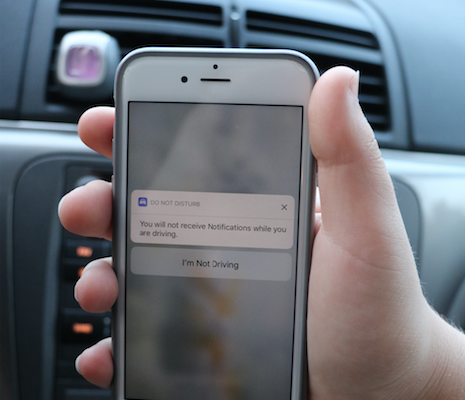While behind wheel, drivers should utilize iPhone’s texting limits

On May 23, 2008, my father was driving me to baseball practice and it was a fairly significant day. It was the first day I was being tried out for the pitcher, and as a small and frail eight-year-old, it was a pretty big deal.
This was probably the most excited I had ever been for a practice in my entire life at that point. I had been practicing lobbing baseballs at our weird basement-garage hybrid’s wall for the past few days, and even though I sucked, I had an unearned confidence in myself.
A couple miles away from the practice diamond, we stopped at a routine red light. Sitting and waiting for it to turn, I stared out the window at the brown and mucky Mississippi River flowing next to me, enjoying my life as a simple-minded eight-year-old kid.
Out of nowhere, a car came flying into the fender of the 2007 Honda Pilot my dad was driving. My head whiplashed forward barely missing the back of the seat in front of me. The tires made a screeching sound I had not heard before or since.
A few expletives were shouted from the front seat, another thing I had not heard before that moment. My dad grudgingly hopped out of the car to investigate and discuss the damage. While that was going on, I sat there dazed and confused. With a slight headache, I sat there watching the back of the seat in front of me.
Confusion was the main emotion I felt, and while it was just a fender bender, I have neck problems still to this day that are direct effects from that day in May.
Now, if my slightly sad sob story doesn’t get your attention for these next few paragraphs and statistics, please ask around. I’m sure you could find someone who has it 100 times worse than I do.
First off, I will start with the biggest and scariest statistic. According to The National Safety Council, there were 1.6 million crashes in 2016. Stemming from that, there were 330,000 severe injuries caused by the driver who was texting while operating.
In fact, 64 percent of all automobile accidents are caused by distracted driving. That is over half of all accidents in the United States caused by one tiny piece of technology.
Your brain is not adequate at multi-tasking. It jumps between the multiple activities so fast that it cannot do anything well.
When driving, that is amplified 100 percent. Even if you are just talking on the phone, your brain still lacks the capacity to effectively pay attention to the road.
The prefrontal cortex is pretty much shut off from the point where you decide to access the phone. You put aside the thought of “I’m putting my life and perhaps hundreds of other drivers’ lives on the line,” and just continue on.
This is a real problem facing not only America but the rest of the world. There are not a whole lot of solutions that Americans willingly will do. The addiction that Americans are facing means very little of the population will put their phones down behind the wheels.
The only thing that seems would work well enough to end a major portion of distracted driving is to completely shut down phone use in a moving vehicle. The only problem is that passengers will be absurdly angry having to do something other than sitting on their phones. They would be forced to go back to the stone age. An age where there was no such thing as an LED screen accessible in a vehicle. Instead, people were forced to look outside, socialize without keyboard and pair of thumbs. Luckily, Apple is starting to move in the right direction.
Apple is moving in the right direction with the Do Not Disturb While Driving feature. Included with iOS 11 is a new feature that forces users to think about phone usage in the car. The nagging and extra steps users have to use make them think about whether or not it’s worth it to endanger not only yourself but others around them. It is a step in the right direction in terms of cutting down on distracted driving, but without that hard discipline on society, it will be incredibly hard to make any progress.









You must be logged in to post a comment Login